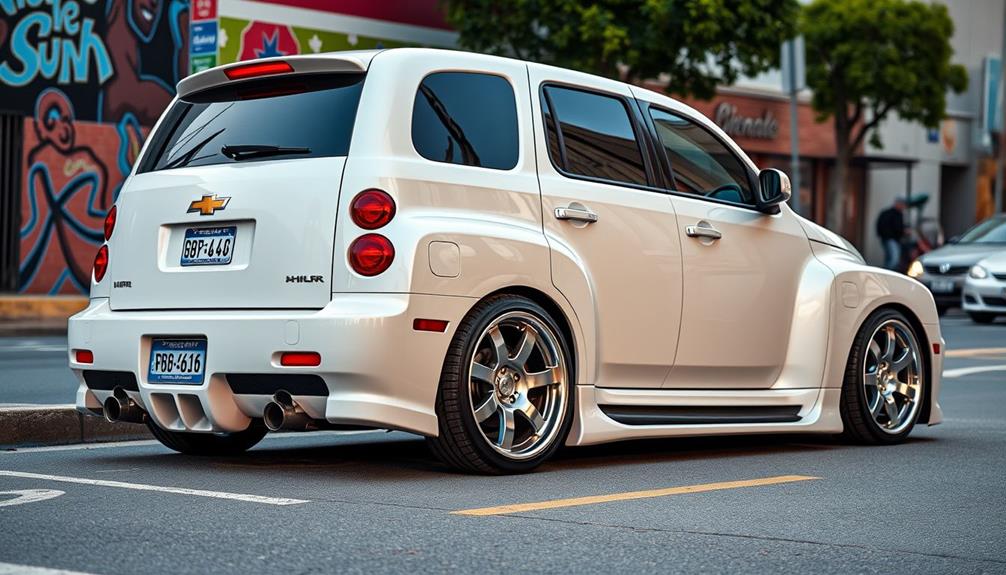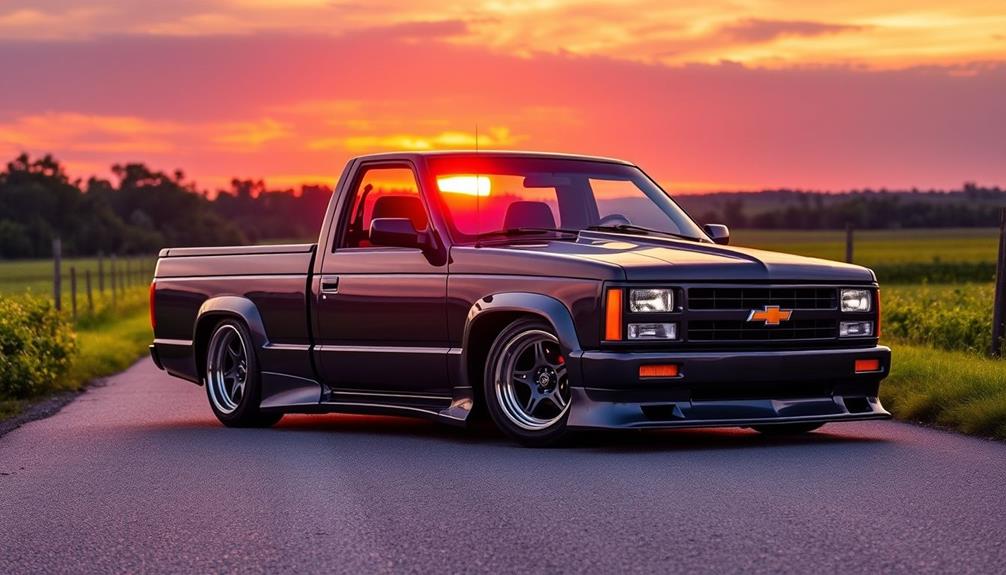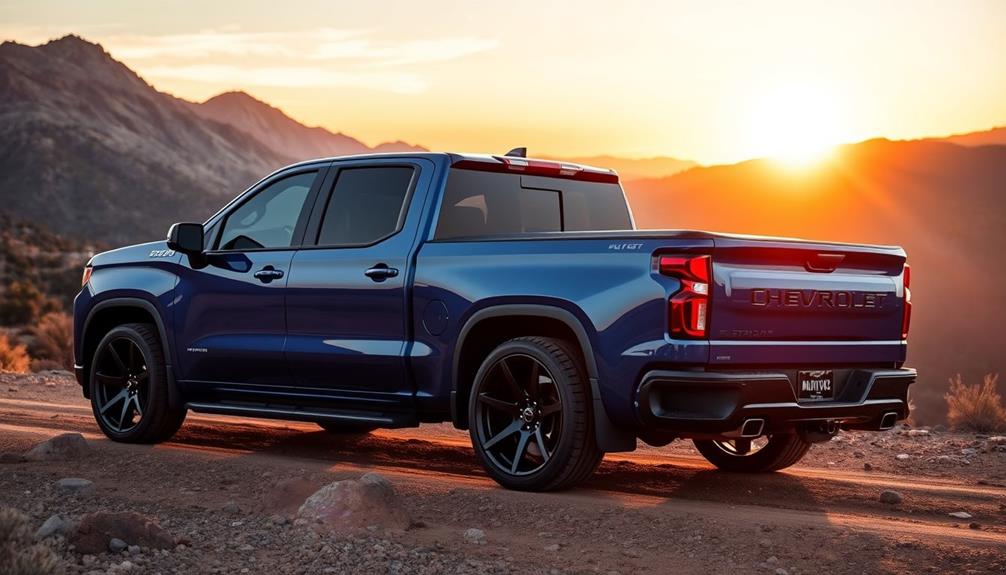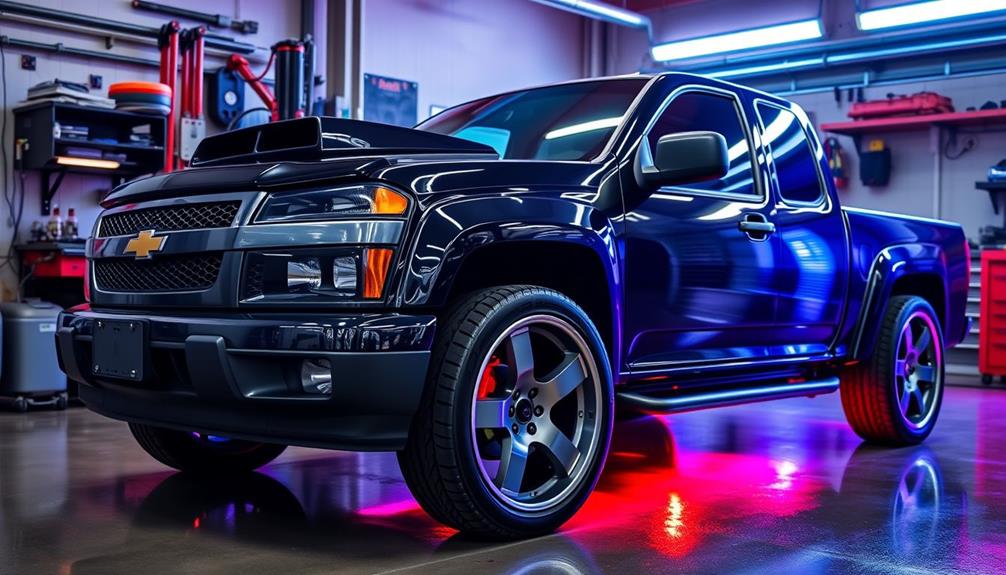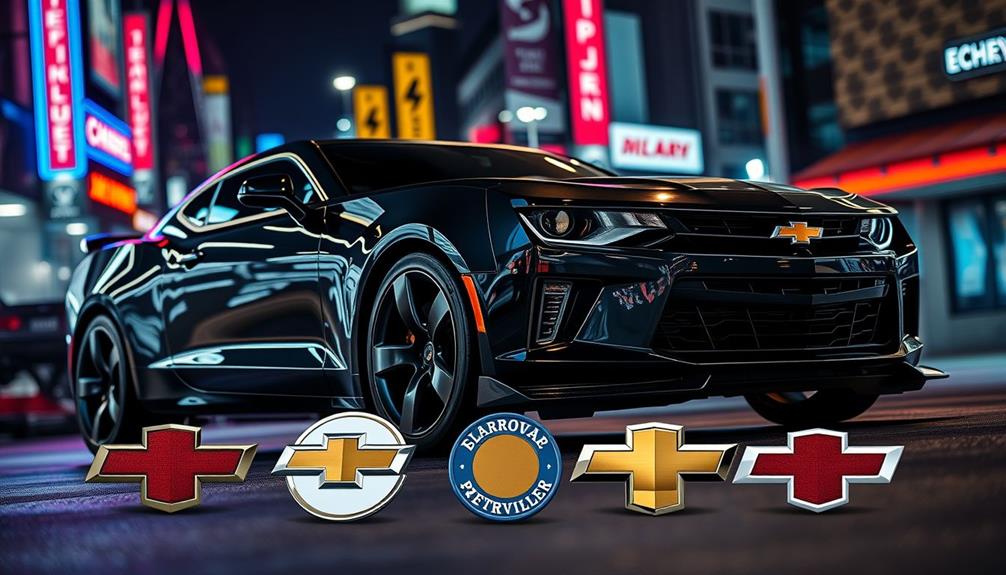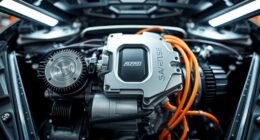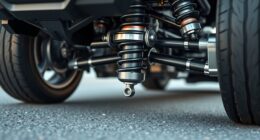Tuning your Chevrolet HHR can greatly enhance its performance and style. By upgrading components like exhaust systems, cold air intakes, and performance chips, you can boost horsepower by up to 40 hp. Consider ECU remapping for improved acceleration and handling. Don't forget to focus on aesthetics with custom paint jobs and interior upgrades that reflect your unique taste. Engaging with the HHR community can provide inspiration and valuable tips for your journey. Plus, with proper installation techniques, your modifications will be seamless and effective. Discover more ways to make your HHR stand out and perform better.
Key Takeaways
- Upgrade to a cold air intake or performance chip to boost horsepower and improve fuel efficiency by up to 20%.
- Consider ECU remapping to enhance throttle response and driving dynamics for a more exciting driving experience.
- Install a stainless steel exhaust system to improve exhaust flow and increase overall performance.
- Customize the interior with retro styling kits and ambient lighting to reflect your personal taste and enhance comfort.
- Engage with the HHR community for support, modification ideas, and sharing experiences to maximize your tuning journey.
Overview of the Chevrolet HHR
The Chevrolet HHR is a compact SUV that made its mark between 2005 and 2011, showcasing a retro design that echoes the classic Chevrolet Suburban.
This vehicle combines vintage charm with modern usability, making it a popular choice among drivers who appreciate both aesthetics and practicality. The spacious interior and generous cargo capacity cater to everyday needs, whether you're running errands or planning a family trip.
Under the hood, the Chevy HHR offers a variety of engine options, including a 2.2L I4 and a 2.4L I4, both of which provide solid vehicles performance for daily driving.
If you're looking for something sportier, the turbocharged 2.0L I4 engine in the SS trim delivers an exciting driving experience.
With different trims like LS, LT, and SS, you can choose the HHR that best fits your performance preferences and feature requirements.
Benefits of Tuning Your HHR

When you tune your Chevrolet HHR, you can access a host of performance benefits that elevate your driving experience. One of the most notable advantages is the potential increase in horsepower and torque—up to 40 hp—depending on the modifications or performance chips you choose. This boost translates to noticeably improved HHR performance, making your daily drives far more enjoyable.
Additionally, incorporating a well-planned personal budget for tuning expenses can help guarantee that you invest wisely in upgrades without overspending.
Upgraded exhaust systems and cold air intakes enhance airflow, resulting in better engine efficiency. Plus, with optimized performance chips, you could see fuel efficiency improvements of up to 20%. That means more savings at the pump without sacrificing power.
Moreover, ECU remapping can greatly enhance driving dynamics, allowing for faster acceleration and a more responsive throttle. You'll notice how quickly your HHR reacts to your commands, making every drive feel more dynamic.
Custom tuning options, such as suspension kits and performance upgrades, further improve handling and ride quality. This means your HHR not only performs better but also feels great on the road.
All of these benefits combined make Chevrolet HHR tuning a smart investment for any enthusiast looking to maximize their vehicle's potential.
Popular Performance Modifications

For those looking to enhance their Chevrolet HHR's performance, several popular modifications can make a considerable difference.
Start by installing a cold air intake (CAI), which can boost horsepower by 5-8 hp while improving fuel efficiency. Next, consider upgrading to a performance chip, like a Stage 1 chip, which can increase power output by 1-40 hp depending on your setup, optimizing fuel usage in the process.
Another effective modification is to add stainless steel headers and a cat-back exhaust system. These upgrades improve exhaust flow and can lead to noticeable increases in engine performance, with headers typically priced around $129.99.
To further enhance stability and handling, invest in a solid motor mount, which provides a more responsive driving experience.
Lastly, ECU remapping is a popular tuning option that can considerably elevate your HHR's horsepower and torque, delivering a driving experience tailored to its retro design.
Enhancing Throttle Response
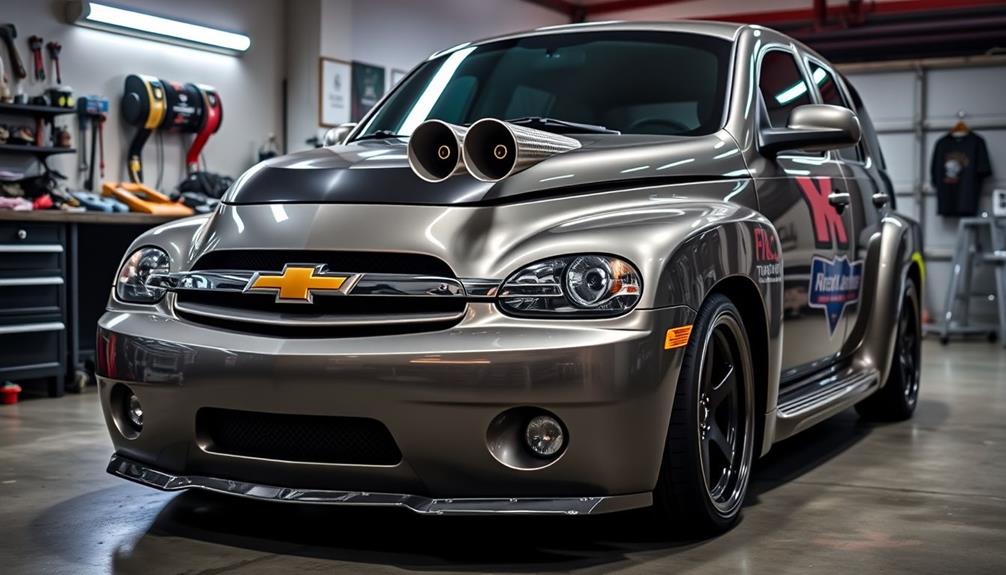
Boosting your Chevrolet HHR's performance goes beyond engine modifications; enhancing throttle response can make a noticeable difference in your driving experience. One of the best ways to achieve this is by installing a Pedal Commander. This device greatly reduces throttle lag, improving acceleration responsiveness and engagement.
Here's a quick overview of the benefits:
| Feature | Description |
|---|---|
| Customizable Settings | 36 sensitivity settings for tailored throttle response. |
| Eco Mode | Boosts fuel efficiency by up to 20% without sacrificing power. |
| Easy Installation | Simple plug-and-play setup in about 15 minutes. |
| Bluetooth Control | Adjust throttle sensitivity in real-time via a mobile app. |
Aesthetic Customization Options
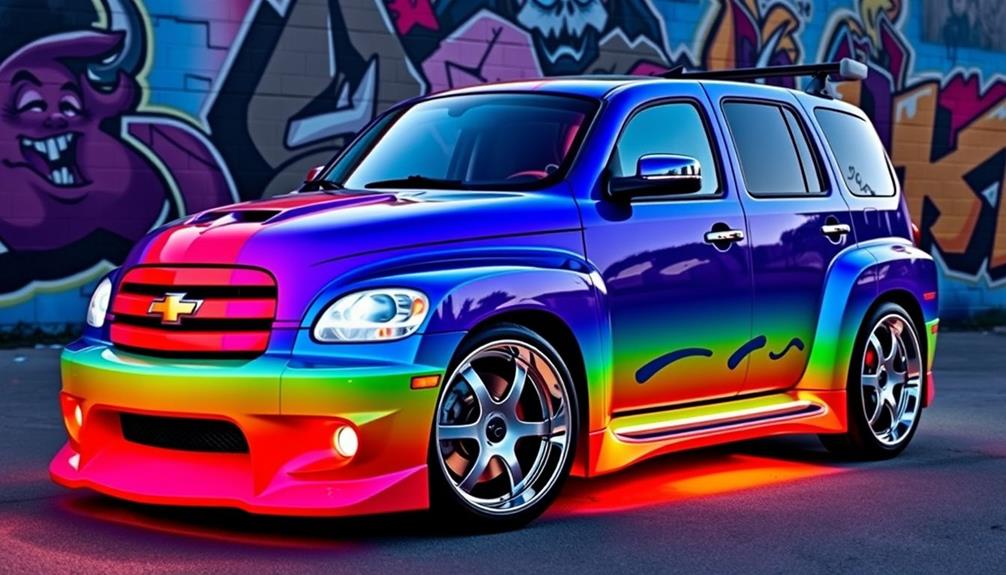
When it comes to aesthetic customization for your Chevrolet HHR, retro styling enhancements can truly make your ride stand out.
By adding personalized interior modifications, you can transform the cabin to reflect your unique taste and comfort preferences.
Whether it's a custom paint job or upgraded upholstery, the options are endless for making your HHR truly yours.
Retro Styling Enhancements
The Chevrolet HHR's retro styling offers a canvas for enthusiasts to express their unique tastes through a variety of aesthetic customization options.
Whether you want to amplify nostalgia or add a personal touch, there are plenty of enhancements to contemplate.
- Two-Tone Paint Scheme: Opt for a two-tone paint job to accentuate the HHR's classic design. This not only enhances its retro aesthetic but also sets your vehicle apart from others on the road.
- Steel Wheels with Dogdish Center Caps: Swap out the standard wheels for steel ones with dogdish center caps. This choice emphasizes the vintage look, evoking the charm of classic automobiles.
- Wood-Trim Kits and Retro Styling Kits: Install wood-trim kits or retro styling kits to elevate the nostalgic appeal. These kits allow you to personalize your HHR further, showcasing your style while maintaining that classic vibe.
Personalized Interior Modifications
Transforming your Chevrolet HHR's interior allows you to create a space that reflects your personal style while enhancing comfort. Custom upholstery options give you the chance to elevate the aesthetics, matching your preferences with unique fabrics and colors.
Upgrading your steering wheel with retro designs or modern materials not only improves the feel but also adds a distinctive flair to your cabin.
Installing ambient lighting kits can create a warm, inviting atmosphere, setting the mood for every drive. Imagine cruising in a space that feels both cozy and stylish!
Additionally, aftermarket dashboard kits featuring wood or carbon fiber finishes can introduce a touch of elegance and sophistication, making your HHR stand out even more.
Don't forget about the flooring—custom-fit liners and floor mats come in various colors and designs, protecting your car's interior while personalizing it further.
With these modifications, you can guarantee your Chevrolet HHR isn't just a vehicle but a reflection of who you are, combining comfort and style in one retro-inspired package.
Community Insights and Support
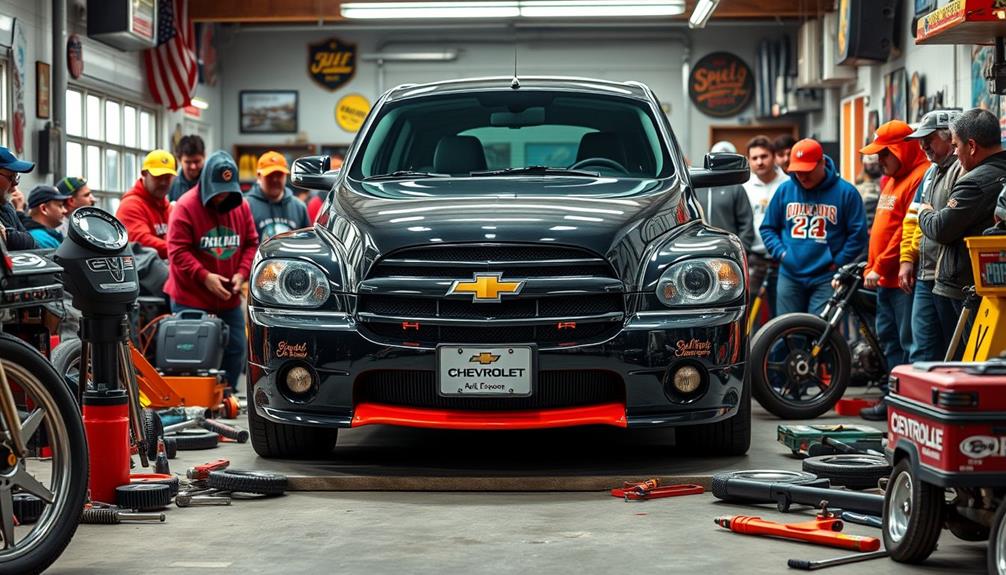
When you connect with fellow Chevrolet HHR enthusiasts, you can discover a treasure trove of modification ideas and performance experiences.
Sharing your journey not only inspires others but also opens up a dialogue that can lead to valuable insights.
Let's explore how these community interactions can enhance your tuning projects!
Community Modification Ideas
Countless Chevrolet HHR enthusiasts thrive in a vibrant community that thrives on sharing modification ideas and support.
This camaraderie makes it easy for you to find inspiration and practical advice for customizing your wagon. Whether you want to enhance its vintage look or boost performance, fellow enthusiasts have got your back.
Engaging with this community can also foster emotional resilience, aiding in coping with challenges that may arise during your modification journey, similar to how wellness retreats promote self-discovery.
Here are three popular modification ideas you might consider:
- Two-Tone Paint Schemes: A classic two-tone paint job not only enhances the retro aesthetic but also allows you to express your personal style.
- Aftermarket Body Kits: Installing a body kit can dramatically change your HHR's appearance while improving aerodynamics and handling.
- Alloy Wheels: Upgrading to lightweight alloy wheels not only boosts your wagon's style but can also enhance performance and fuel efficiency.
Online forums are an excellent resource for DIY tutorials and guides, making it easy to implement these changes.
Remember, regular maintenance is crucial, too. Addressing common issues like engine stalling will guarantee your modified HHR stays reliable and enjoyable for years to come.
Join the community, share your journey, and let your creativity shine!
Sharing Performance Experiences
Sharing performance experiences within the Chevrolet HHR community can be incredibly rewarding.
You'll find that many enthusiasts rave about the significant improvements in throttle response and overall driving experience after installing performance chips and intake systems. Online forums are buzzing with discussions about tuning options, especially the benefits of ECU remapping and how different driving modes can elevate your HHR's performance.
Consider joining local car clubs to connect with fellow HHR owners.
These gatherings not only allow you to exchange valuable tuning tips but also let you participate in events that celebrate modified vehicles. Social media platforms are another excellent resource for sharing photos and videos of your modified HHR. You can showcase your tuning projects and draw inspiration from others' builds.
Don't forget about the wealth of information available on YouTube.
Numerous channels offer step-by-step tutorials that can guide you through the installation processes for various performance parts, enhancing your understanding of tuning techniques. By engaging with this vibrant community, you'll not only improve your HHR but also build lasting connections with fellow enthusiasts who share your passion.
Installation Tips and Best Practices
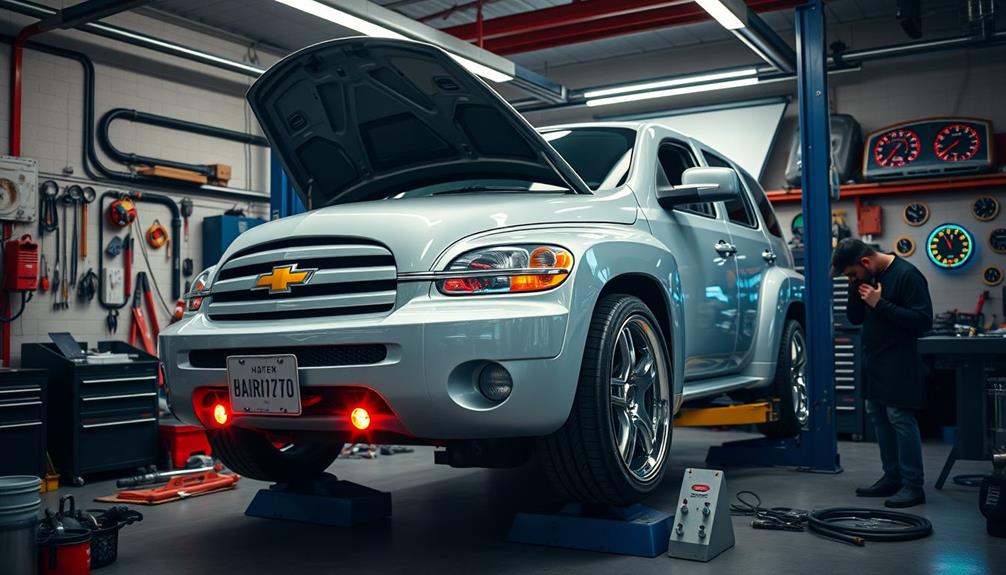
To achieve a successful installation of the Pedal Commander, you'll want to follow a few essential steps to confirm everything operates smoothly. This plug-and-play device can be set up in about 15 minutes, requiring no special tools or technical expertise.
For those looking to enhance their overall driving experience, consider integrating essential oils for respiratory health to keep your airways clear and fresh.
Here are three key tips for a seamless installation:
- Turn Off the Ignition: Before starting, switch off the ignition and wait 10-15 minutes for the ECU to reset. This confirms that you don't run into any issues while disconnecting the accelerator pedal assembly.
- Secure the Control Module: After installation, use velcro to secure the control module in a clean, accessible area. This keeps your vehicle's interior clutter-free while allowing you to reach it easily when needed.
- Clean and Secure Cables: Make sure to clean up and secure any cables during the installation. Properly managing these will prevent tangling during operation, confirming a smooth driving experience.
Following these installation tips will help you enjoy the benefits of your Pedal Commander while maintaining your vehicle's integrity.
Plus, you can easily remove it before dealer visits to keep your factory settings intact.
Performance Chips and Upgrades
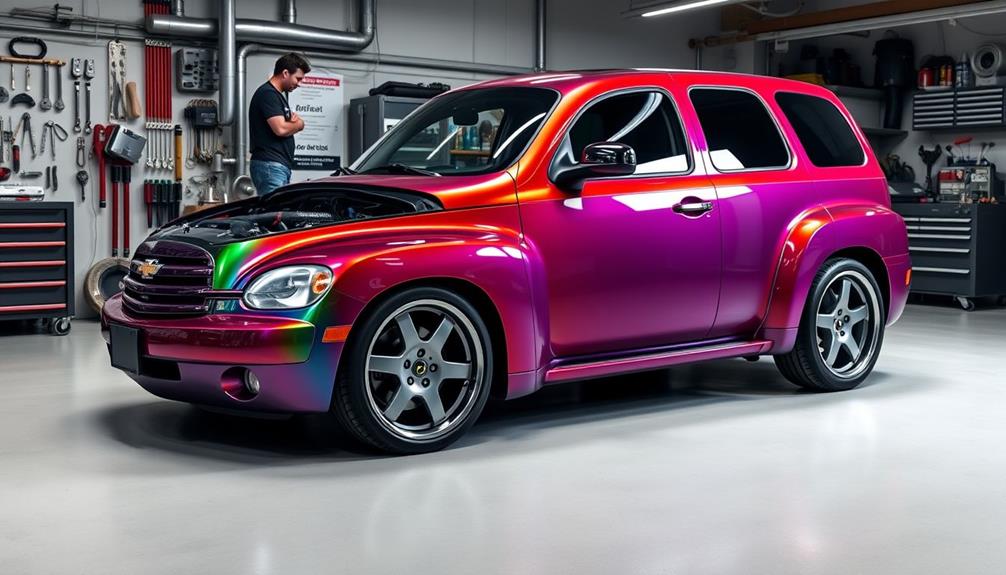
If you're looking to boost your Chevrolet HHR's performance, performance chips are an excellent investment. These chips can enhance horsepower by anywhere from 1 to 40 hp, depending on the type and setup you choose. Prices range from $99.99 to $299.95, making it easy to find an option that fits your budget.
One affordable choice is the Stage 1 Performance Chip, which originally retailed for $149.99 but is now available for just $99.99.
Installing a performance chip is typically straightforward, often taking ten minutes or less, especially with online tutorials to guide you through the process.
Not only do these upgrades provide significant power gains, but they also optimize fuel usage, leading to better acceleration and an improved driving experience.
Plus, each performance chip comes with a money-back guarantee, ensuring you're satisfied with the enhanced performance of your HHR.
Whether you want a slight bump in power or a more substantial upgrade, investing in a performance chip is a smart move to maximize your retro-inspired wagon's potential.
Embracing the HHR Culture

Embracing the HHR culture means diving into a vibrant community that celebrates the unique blend of retro styling and modern performance.
You'll quickly find that the Chevrolet HHR, produced from 2005 to 2011, attracts enthusiasts who appreciate its nostalgic design reminiscent of classic Chevrolet models.
This community thrives on customization, allowing you to express your personal style through modifications.
Here are three ways to connect with the HHR culture:
- Join Online Forums: Engage with fellow HHR owners in discussions, share your experiences, and get tips on modifications that enhance both aesthetics and performance.
- Explore Customization Options: Consider two-tone paint schemes, wood-trim kits, or vintage-inspired modifications to give your HHR a unique look that stands out from the crowd.
- Participate in Events: Attend car meets and shows where you can showcase your HHR and connect with others who share your passion for retro-inspired automotive culture.
Frequently Asked Questions
Is the Chevy HHR Fast?
The Chevy HHR isn't particularly fast, hitting 0 to 60 mph in about 8.5 seconds. However, the turbocharged SS model ups performance considerably, making it quicker and more responsive than the standard versions.
What Does the HHR Stand for in a Chevrolet?
The HHR stands for "Heritage High Roof." It reflects the vehicle's retro-inspired design, combining a spacious interior with elements from classic Chevrolet models. This unique name captures its blend of nostalgia and modern functionality.
How Much Horsepower Does a Chevy HHR Make?
The Chevy HHR's horsepower varies by engine. The 2.2L I4 offers about 143 hp, while the 2.4L I4 provides around 172 hp. Choose the SS trim for an impressive 260 hp with the turbocharged engine.
Is a Chevy HHR a Station Wagon?
Yes, you could consider a Chevy HHR a station wagon. Its spacious interior, low profile, and hatchback-like rear make it functionally similar to traditional station wagons, offering utility and aesthetic appeal that many drivers appreciate.
Conclusion
In the world of retro-inspired rides, your Chevrolet HHR can truly shine like a diamond in the rough. By tuning it up and exploring performance mods, you're not just enhancing your wagon's capabilities; you're revealing a treasure trove of potential. Embrace your passion, connect with fellow enthusiasts, and let your HHR roar with personality. So, roll up your sleeves and immerse yourself in the vibrant culture of HHR tuning—your journey is just beginning! Venture beyond the everyday and discover the thrilling world of offroad performance upgrades for your Chevrolet HHR. With a lift kit and rugged tires, you can take your wagon to new heights and explore the great outdoors with confidence. Embrace the versatility of your HHR and transform it into a capable offroad machine that will turn heads wherever you go.
